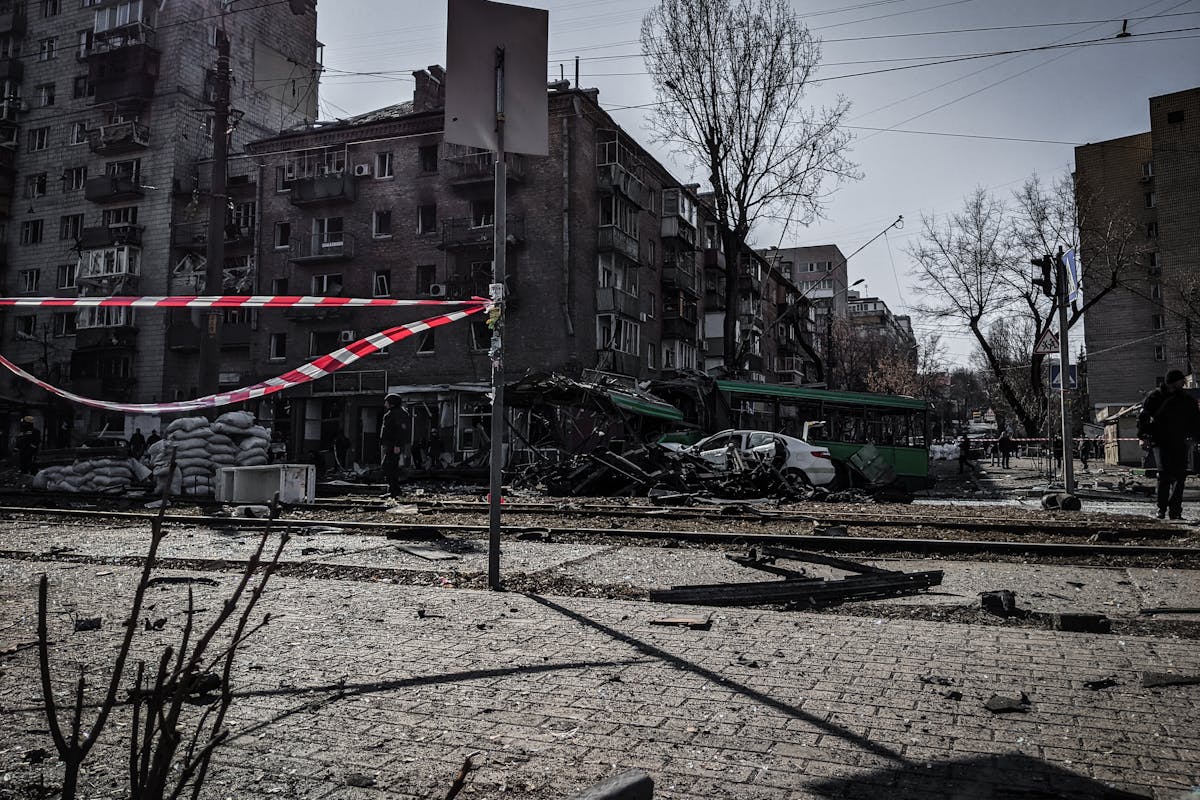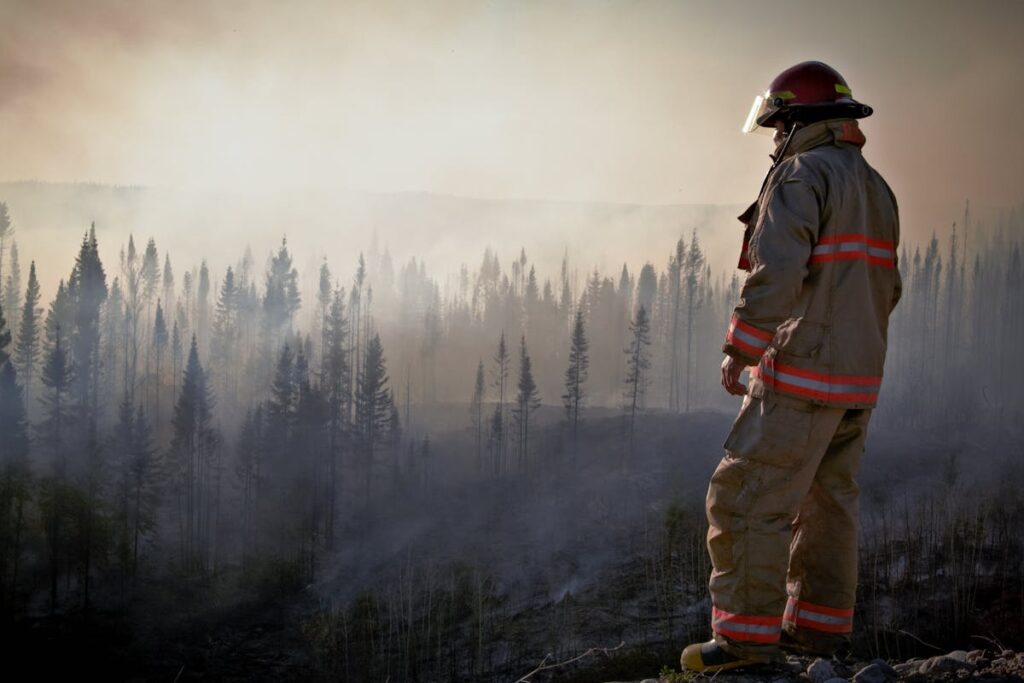In the annals of history, certain landmark accidents have left indelible impressions, compelling us to reassess and improve safety standards across various disciplines. Incidents such as the Chernobyl nuclear catastrophe, the sinking of the Titanic, and the Challenger shuttle explosion serve as grim reminders of the cost of negligence, while also highlighting our capacity for growth and innovation in the aftermath. In this way, these accidents provide fascinating insight into the evolution of societal norms and practices, setting the stage for an engaging exploration of their profound and lasting impact.
The Chernobyl Nuclear Disaster
Unquestionably one of the most catastrophic accidents in industrial history, the Chernobyl Nuclear Disaster occurred on April 26, 1986, at the No. 4 reactor in the Chernobyl Nuclear Power Plant, near the city of Pripyat in the north of the Ukrainian SSR in the Soviet Union.
This disaster, which resulted from a flawed reactor design that was operated with inadequately trained personnel, underscored the grave importance of nuclear safety. The immediate aftermath claimed the lives of 31 people, and long-term effects such as cancers and deformities continue to be seen in the population.
The environmental impact of the Chernobyl disaster was equally profound. High levels of radioactive particles were released into the atmosphere, contaminating land, water, and air. The surrounding 30km radius, now known as the ‘Exclusion Zone’ remains largely uninhabited, with wildlife and nature reclaiming the abandoned spaces.
The incident led to a significant re-evaluation of nuclear safety procedures and regulations worldwide. The International Atomic Energy Agency (IAEA) intensified its efforts in promoting nuclear safety and developed new protocols to prevent such incidents in the future. This tragic incident remains a stark reminder of the potential consequences of neglecting nuclear safety.
Discovery of Penicillin
While the Chernobyl disaster exemplifies the dangers of scientific negligence, the discovery of penicillin offers a contrasting depiction of scientific endeavor leading to life-saving breakthroughs. Penicillin, a substance derived from the Penicillium mold, was discovered by Sir Alexander Fleming in 1928, setting the stage for a series of medical breakthroughs that transformed the field of medicine.
Fleming’s discovery was not the result of a meticulously planned research operation, but a fortuitous accident. He observed that a Petri dish contaminated by mold had an inhibiting effect on surrounding bacterial colonies, leading him to further investigate this phenomenon. His research resulted in the extraction of a substance which he named penicillin, the first antibiotic, signalling the onset of the antibiotic revolution.
The discovery of penicillin was a turning point in medical history. It marked the dawn of a new era, in which bacterial infections could be treated effectively, saving countless lives. It also led to the development of many other antibiotics, forming a critical component of modern medicine. Ultimately, the accidental discovery of penicillin underscores how scientific accidents can lead to monumental advancements, profoundly impacting human civilization.
The Titanic Sinking
The sinking of the Titanic is another pivotal accident in history, carrying its own lessons about human miscalculations and the cost of overconfidence. This tragic event unfolded on April 15, 1912, when the Titanic, a ship hailed as unsinkable, struck an iceberg in the North Atlantic Ocean, despite receiving an iceberg warning. The Titanic’s legacy is a stark reminder of how human error, coupled with arrogance, can lead to catastrophe.
The Titanic was equipped with cutting-edge technology of its era, but the failure to heed the iceberg warning revealed a dangerous complacency. The belief in its invincibility overrode the necessity for caution, leading to a disaster that claimed more than 1,500 lives. The Titanic’s legacy, consequently, isn’t just about the ship’s grandeur or its tragic end, but also a commentary on human hubris and disregard for nature’s unpredictability.
Post-accident investigations led to significant maritime safety improvements, including stricter regulations for lifeboats and the establishment of the International Ice Patrol. These measures aimed to prevent similar tragedies, cementing the Titanic’s legacy as a catalyst for change in maritime safety standards. Therefore, the Titanic sinking is not only a historical accident but a seminal event that reshaped maritime practices globally.

The Chernobyl Nuclear Disaster
If the Titanic disaster demonstrated the dangers of complacency in the face of natural threats, the Chernobyl nuclear disaster is an alarming indication to the hazards of technological mishaps. Located in the modern-day Ukraine, the Chernobyl incident of 1986 is considered the worst nuclear power plant accident in history.
A sudden surge of power during a reactor systems test resulted in an explosion and subsequent fires, which released at least 5% of the radioactive reactor core into the atmosphere. The radiation impact was immediate and catastrophic, causing two immediate deaths and later claiming at least 28 more lives in the following weeks due to acute radiation syndrome.
The environmental consequences have been profound and long-lasting. The immediate vicinity around the nuclear plant, known as the Exclusion Zone, still bears the scars of radiation, rendering it uninhabitable for humans. The wildlife has been affected, with reports of mutations and increased mortality rates among the local fauna.
Furthermore, the disaster had global ramifications, as radioactive particles were carried by wind currents, causing increased radiation levels across Europe. The Chernobyl disaster, consequently, is a stark reminder of the potential devastating effects of technological failures.
The Hindenburg Airship Tragedy
How could the marvel of engineering and symbol of luxurious air travel, the Hindenburg airship, meet such a tragic end? The Hindenburg disaster, a horrific incident captured by media coverage in 1937, dramatically shifted public perception towards airship technology. The German-built zeppelin was engulfed in flames, killing 36 people and marking a grim end to the era of passenger-carrying airships.
The extensive media coverage played a significant role in shaping the narrative and public perception of the disaster. Images and film reels of the engulfed airship were broadcasted worldwide, instilling a sense of fear and mistrust in airship technology.
The historical impact of the Hindenburg disaster was profound. It prompted a thorough reassessment of safety regulations in aviation, pushing for advancements to prevent such tragedies. The disaster response was swift and decisive, with the immediate grounding of similar airships and the subsequent development of more secure aviation technologies.
In retrospect, the Hindenburg disaster was a pivotal moment in history. It reshaped the future course of aviation, underlining the importance of safety regulations and the power of media in shaping public perceptions. It stands as a stark reminder of the potential dangers of untested technological advancements.
The Challenger Space Shuttle Explosion
Plunging the world into shock, the Challenger Space Shuttle exploded just 73 seconds after its launch on January 28, 1986. This tragic event resulted in the deaths of all seven crew members aboard, and it severely dented the reputation of NASA. The disaster was caused by a faulty O-ring seal in the right solid rocket booster, which led to the rupture of the external fuel tank and subsequent explosion.
The catastrophe forced NASA to halt all shuttle flights and instigate a thorough review of its operations, leading to significant NASA reforms. These changes focused on improving operational procedures, equipment design, and maintenance practices to prevent a similar incident from occurring again. Moreover, an emphasis was laid on improving public safety, with increased scrutiny on the selection and training of astronauts, and the development of a more robust emergency escape system.
The Challenger disaster served as a turning point in space exploration history, demonstrating the inherent risks of space travel and the need for constant vigilance and improvement. It underscored the necessity of rigorous safety measures and reforms, shaping the future direction of NASA and its approach to space exploration.
The Fukushima Daiichi Nuclear Meltdown
In the wake of the catastrophic Challenger Space Shuttle Explosion, another monumental disaster resonated shockwaves throughout the globe: the Fukushima Daiichi Nuclear Meltdown. Occurring in 2011 following a massive earthquake and subsequent tsunami, the event underscored the fragility of nuclear safety and the critical importance of effective disaster response.
This calamity was a stark reminder of the potential risks associated with nuclear power. Despite robust safety measures, the facility failed to withstand the one-two punch of natural disasters. The earthquake damaged critical infrastructure and the ensuing tsunami inundated the generators, crippling the cooling systems and leading to the meltdown.
The disaster response was swift but fraught with challenges. Rescue efforts were hampered by the radiation, necessitating the use of robots and remote-controlled devices. The ongoing task of decontamination and decommissioning of the plant continues to present formidable obstacles.
The Fukushima Daiichi Nuclear Meltdown was more than a tragic accident—it was a powerful lesson. It highlighted the need for enhanced nuclear safety protocols, robust disaster response plans, and the importance of continual review and adjustment of these measures. This event certainly altered the course of nuclear power policy globally.
The Exxon Valdez Oil Spill
Few environmental disasters have had the magnitude or the lasting impact of the Exxon Valdez oil spill. March 24, 1989, marked a dark day for the environment when 10.8 million gallons of crude oil bled into Alaska’s pristine Prince William Sound, having severe environmental impact.
The emergency response was inadequate, unable to prevent widespread marine and coastal devastation. The media coverage of oil-soaked wildlife, particularly birds and otters, fueled public awareness about the catastrophic consequences of oil spills. This event was a catalyst for significant legal repercussions, leading to the passing of the Oil Pollution Act in 1990.
In the aftermath, wildlife recovery became a priority, as experts worked tirelessly to rehabilitate affected species and restore damaged ecosystems. However, the spill’s long-term effects continue to reverberate, with certain species still not fully recovered.
The Exxon Valdez oil spill also underscored the necessity of corporate accountability in environmental disasters. Exxon was fined $5 billion, a sum later reduced to $507.5 million, marking a significant yet contentious legal precedent. This event served as a grim reminder of the environmental cost of human error and corporate negligence.
Frequently Asked Questions
What Were the Long-Lasting Environmental Impacts of These Landmark Accidents?
The long-lasting environmental impacts include significant ecological degradation requiring extensive restoration efforts. Additionally, these incidents have highlighted the necessity for improved disaster preparedness to mitigate future environmental damage.
What Safety Protocols Were Put in Place After These Historical Accidents?
In response to various historical accidents, stringent safety regulations were implemented, enhancing emergency preparedness. These include regular safety drills, stricter operational standards, and the adoption of advanced safety technologies, notably improving overall safety and emergency response capabilities.
How Have These Catastrophes Influenced Pop Culture and Media Over Time?
Disasters have greatly influenced pop culture and media, inspiring numerous disaster films, artistic representations, and literature. They often serve as symbolic metaphors, reflecting societal anxieties and prompting discussions on human vulnerability and resilience.
What Role Did Political Decisions Play in These Notable Accidents?
Political decisions often played significant roles in notable accidents, particularly through regulatory failures. Insufficient oversight or inadequate safety measures can lead to disasters, which subsequently heighten public awareness and demand for policy reform.
How Have These Accidents Influenced Engineering and Design Changes in Their Respective Fields?
These accidents have notably influenced engineering innovations and design evolution. They prompted revisions of safety standards, inspiring advancements in technology, improving systems’ efficiency, and minimizing risks, thereby transforming their respective fields in a constructive manner.

